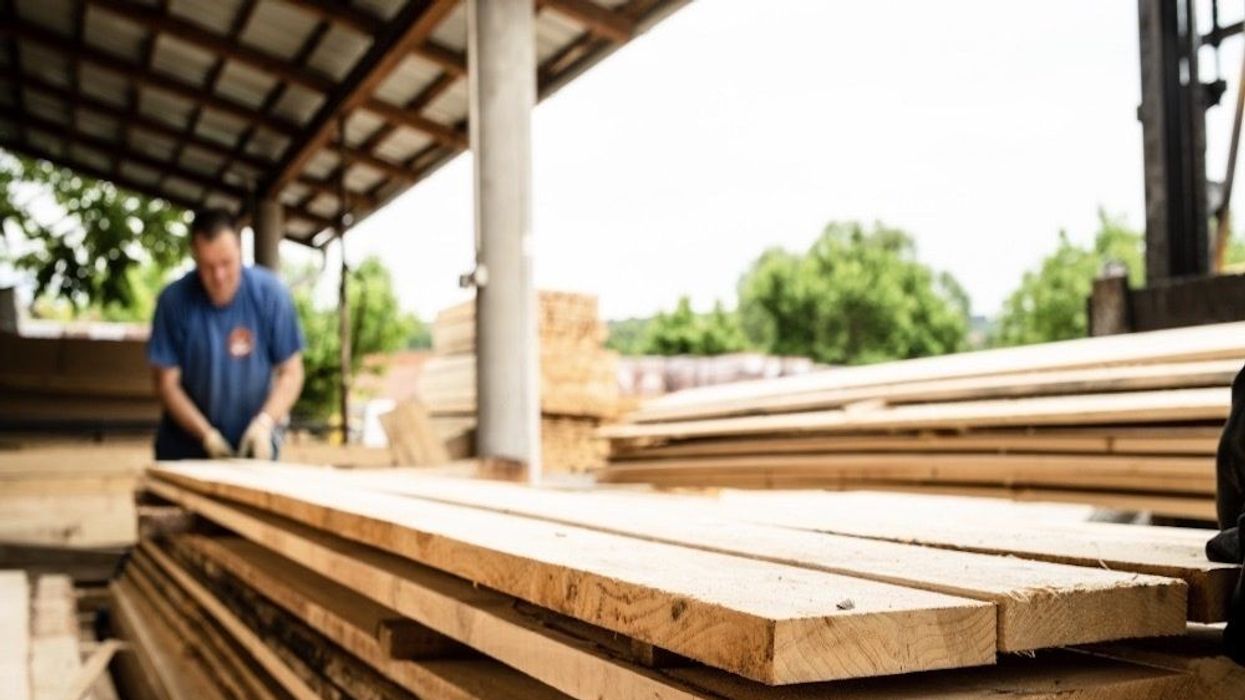Supply chain disruptions caused lumber prices to surge in mid-2021 before returning to near-normal levels in August. And now it appears that respite was short-lived.
“A price increase is coming because the floods and mudslides in BC shut down the railways, and Ontario brings in big lumber, as in anything 2x10 or larger, from there,” Mike Bowering, President of Mutual Developments, told STOREYS. “So, for example, floor joists, rafters and plywood for houses come from BC and they're being held up.”
Lumber prices peaked in May -- in US dollars, they reached $1,600 per thousand board feet for the first time ever. In Canada, a 2,000-3,000 sq. ft. house used about $40,000 worth of lumber before the COVID-19 pandemic, but by last year’s peak the same quantity of material cost as much as $100,000.
READ: Welcome to 2022: “Basic” Kitchener-Waterloo Home Sells for Over $1.2M
An additional reason lumber prices are rising again is an adhesive used during the production process has become harder for mills to acquire, elucidating just how extensive the COVID-induced supply chain disruptions are.
“The supply chain backup means you can’t get the glue,” Bowering said. “Some mills have lumber inventory, but when they get low, prices will climb.”
According to Luke Johnston, Executive Vice President of Development and General Counsel at Dunpar Homes, the cost of lumber for framing and engineered wood trusses rose by 100% last year. That isn’t all -- a weak supply chain also caused metal studs and ductwork to surge by 100% and 25%, respectively.
“Ductwork, and really all HVAC-related stuff, has a lot of steel and sheet metal going into those products, but it’s difficult to find now and more expensive than ever,” Johnston said. “Masonry as well: the price per brick in actual material and the cost to install the brick has gone up. Everything costs more now than two years ago before the pandemic. It’s a perfect storm because you have unprecedented shortages of supply and labour, skilled labour in particular, and while you expect demand to decline during a pandemic, the opposite happens.”
Dunpar is currently building a low-rise wood frame project in Mississauga where, during the second half of 2021, cost fluctuations were noticeably substantial. Although lumber prices dropped significantly by summer, Johnston says their recent growth is devastating for both cost certainty and the price of homes in the GTA’s white-hot housing market.
“Demand for real estate has risen and there’s low supply, so that means prices are high,” he said. “One-hundred percent, consumers are paying significantly more. It’s not a question of profit margin, it’s a question of real cost. It will cost more to build that house and that cost is passed onto consumers. It’s a sad reality.”





















